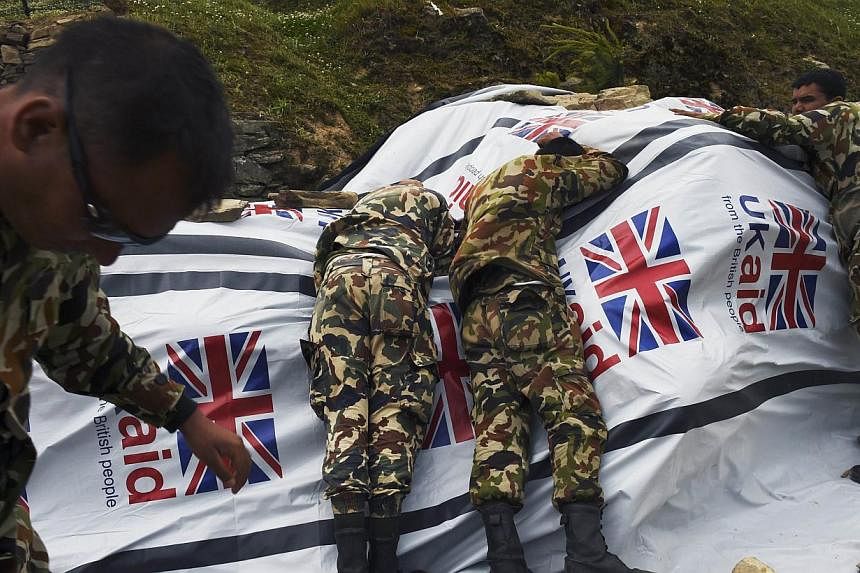KATHMANDU (AFP) - Nepal's government said Sunday it has denied entry to three British military helicopters sent to help the earthquake relief effort because of fears they could damage buildings when landing.
A foreign ministry spokesman said the Chinook helicopters, which arrived in New Delhi last week en route to the quake-hit country, were too big to land.
"We have told the British authorities that they cannot fly their Chinook helicopters here because our technical team says they are likely to damage the houses and other buildings in the Kathmandu valley," spokesman Tara Pokharel told AFP.
"We are worried about broken windows and roofs being blown off by these big helicopters." The April 25 earthquake killed more than 8,000 people and left thousands more homeless and in desperate need of food, clean water and shelter.
Getting relief to the worst-hit villages is a huge challenge because many are in remote mountainous terrain that is only accessible by helicopter or on foot.
India, China and the United States have sent helicopters and are helping take food, water and tents to affected communities.
But there has been criticism of the US decision to send large Osprey helicopters, which experts say are ill-suited to Nepal's mountainous terrain.
Local media reported that the down-draft from an Osprey relief flight blew the roof off a small building in a quake-hit village as it delivered aid.
A US embassy official told AFP that such accidents were rare.
"We are looking into whether the damage to the roof was caused by the Osprey or the quake... obviously such incidents are rare and if it turns out to be true, we will take care of the damage," the official said.
So far the Ospreys have delivered 21.5 tonnes of aid, he said.
Steven Bruce Bokan, chief flying instructor for Nepalese helicopter company Manang Air, said the British Chinooks and US Ospreys were "basically useless" in the Himalayas.
"They may work in deserts and other places which have huge areas for landing and take-off, but they are too big to land in the Himalayas," Bokan told AFP.
"The Osprey is a massive aircraft - it needs an area the size of a football field to land safely, otherwise it can blow people over." "It's not rocket science - smaller helicopters like the French Squirrel helicopters have been flying here for years because they work in this environment," added Bokan, an Australian who has been flying helicopters for 26 years.
Asked about the decision to reject the twin-rotor Chinooks, Britain's defence ministry said: "The Chinook helicopters are in the area, and we're in discussion with the Nepalese authorities about their needs and basing."
Bokan said that although the Chinooks were not suitable to land in the mountains, they could be useful as aerial cranes to transport building materials and other heavy equipment to remote areas inaccessible by road.

